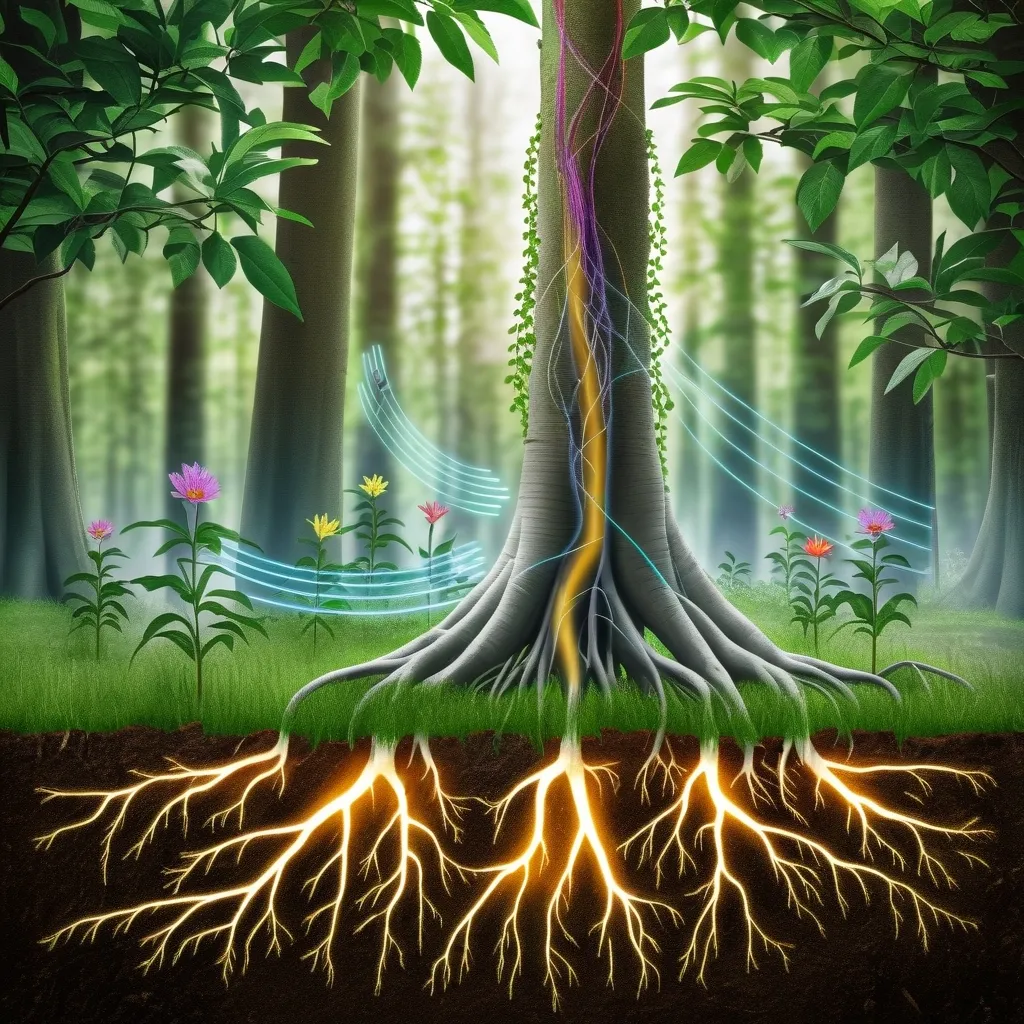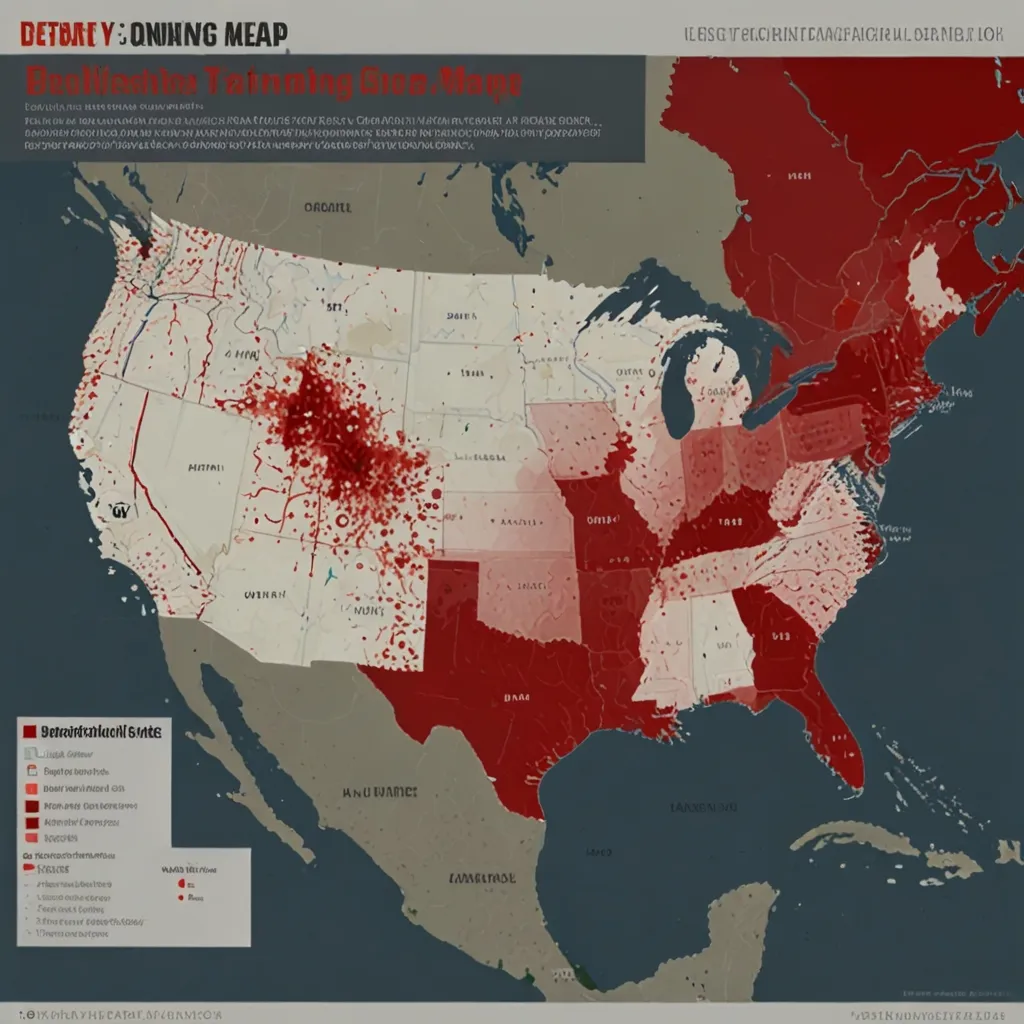The Secret Language of Plants: A Hidden World of Communication
Ever wondered if the plants in your garden are gossiping about you? Well, they might not be discussing your latest fashion choices, but they are definitely talking. Welcome to the fascinating world of plant communication, where trees whisper through their roots and flowers send airborne messages.
It’s easy to think of plants as silent, passive beings. After all, they don’t exactly shout when they need water, right? But beneath the surface, there’s a whole lot of chatter going on. Plants have developed an intricate system of communication that puts our social media networks to shame.
Let’s start with the underground superhighway of information - the “wood-wide web.” No, it’s not a new internet service for lumberjacks. It’s an incredible network of fungal threads called mycelium that connect the roots of different plants. These fungi act like fiber-optic cables, allowing plants to share resources and information.
Imagine you’re a tree, minding your own business, when suddenly you’re attacked by a swarm of hungry insects. What do you do? You can’t exactly run away or swat them off. But you can send out a distress signal through the fungal network. Your neighboring trees pick up this SOS and start boosting their defenses, producing chemicals that make them less tasty to the bugs. It’s like a neighborhood watch program, but for plants.
But the plant world’s communication skills don’t stop at root level. They’re also masters of airborne messaging. When a plant is stressed or damaged, it releases volatile organic compounds (VOCs) into the air. These chemical smoke signals can be picked up by other plants, warning them of potential danger.
You know that fresh-cut grass smell? That’s actually a distress signal. When you mow your lawn, the grass is basically screaming, “Help! We’re under attack!” Other plants in the area pick up on this and start beefing up their defenses. So next time you’re mowing the lawn, just remember - you’re not just cutting grass, you’re starting a plant panic.
Now, you might be thinking, “Okay, chemical signals are cool and all, but surely plants can’t actually hear anything, right?” Well, hold onto your gardening gloves, because plants are also tuning into the world of sound and vibration.
Research has shown that plants can produce and respond to sounds beyond our hearing range. Corn seedlings, for example, make tiny clicking noises at high frequencies. When these sounds are played back to them, they actually grow towards the source. It’s like they’re saying, “Hey, is that you, cousin Cornelia? I’m coming over!”
This ability to sense vibrations suggests that plants have a form of perception that’s entirely different from ours. They might not have ears, but they’re definitely listening in their own unique way.
But wait, there’s more! Plants aren’t just communicating; they’re showing signs of intelligence too. Now, we’re not talking about plants solving math problems or writing poetry (although who knows what they get up to when we’re not looking). But they are capable of complex behaviors that allow them to adapt to their environment.
Plants can sense light, temperature, and even the presence of other plants and animals. They can make decisions based on this information, like when to grow, when to flower, or when to conserve water. In one study, pea plants were given water while their neighbors were left dry. The well-watered plants actually closed their pores to conserve water, even though they had plenty. It’s like they were saying, “Hey buddy, I’ve got your back. Let’s get through this drought together.”
This kind of plant intelligence and communication has huge implications for agriculture and conservation. Imagine if we could tap into this natural warning system to protect crops from pests without using harmful chemicals. Or if we could better understand the health of ecosystems by listening to what the plants are telling us.
The potential for innovation is enormous. We could develop advanced sensors that detect plant signals, or create new biotechnologies that mimic plant communication. It’s like we’re on the brink of learning an entirely new language - the language of nature itself.
But it’s not just about technology and science. Understanding plant communication invites us to rethink our relationship with nature. Native American healers have long believed that plants communicate with each other and with humans. While this might have sounded mystical in the past, science is now catching up with these traditional beliefs.
Trees, in particular, have been found to be highly social and sensitive beings. They form friendships, build communities, and look out for each other. Peter Wohlleben, a forester who has studied the social lives of trees, believes that forests operate as cohesive units rather than individual trees competing against each other. It’s like one big, leafy family reunion.
This “wood-wide web” allows trees to share nutrients and warn each other of dangers, creating a resilient and interconnected community. It’s a bit like how we use social media to stay connected with friends and family, only without all the cat videos and political arguments.
As we continue to uncover the secrets of plant communication, we’re entering a new era of understanding and cooperation with the natural world. Imagine a future where our technology is in tune with nature, where we can listen to the messages plants convey and adapt our practices to work in harmony with them.
This isn’t just a far-off dream. Scientists are working towards this reality every day. We’re developing sensors that can detect plant signals and creating more sustainable agricultural practices based on our understanding of plant communication.
But perhaps the most important outcome of this research is how it changes our perception of the natural world. When we understand that plants are constantly communicating, adapting, and even making decisions, it’s hard to see them as just passive green things.
Instead, we start to see plants as dynamic, interacting beings that are part of a larger ecosystem. We begin to appreciate the complexity and interconnectedness of nature in a whole new way. It’s like suddenly realizing that the “background” in a painting is actually full of hidden details and meaning.
This shift in perspective can have profound implications for how we treat our environment. When we see plants as communicating, feeling beings, it becomes harder to justify clear-cutting forests or paving over green spaces. We might think twice before using harmful pesticides that disrupt these natural communication networks.
In the end, the secret language of plants is about more than just science. It’s about reconnecting with the world around us. It’s about recognizing that even the most seemingly simple organisms are capable of complex behaviors and interactions.
As we continue to explore this fascinating realm, we may just find that the natural world is far more wonderful and interconnected than we ever imagined. So the next time you’re in a forest or even just your backyard, take a moment to listen. You might not hear anything with your ears, but there’s a whole conversation happening all around you.
Who knows? Maybe one day we’ll be able to join in on the chat. Until then, let’s appreciate the complex, chatty world of plants and do our best to protect these incredible communicators. After all, they’ve been talking for millions of years - it’s about time we started listening.






